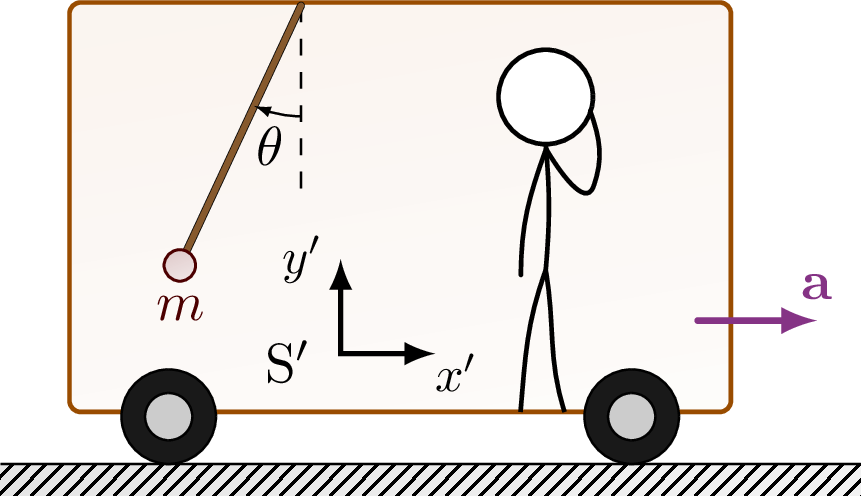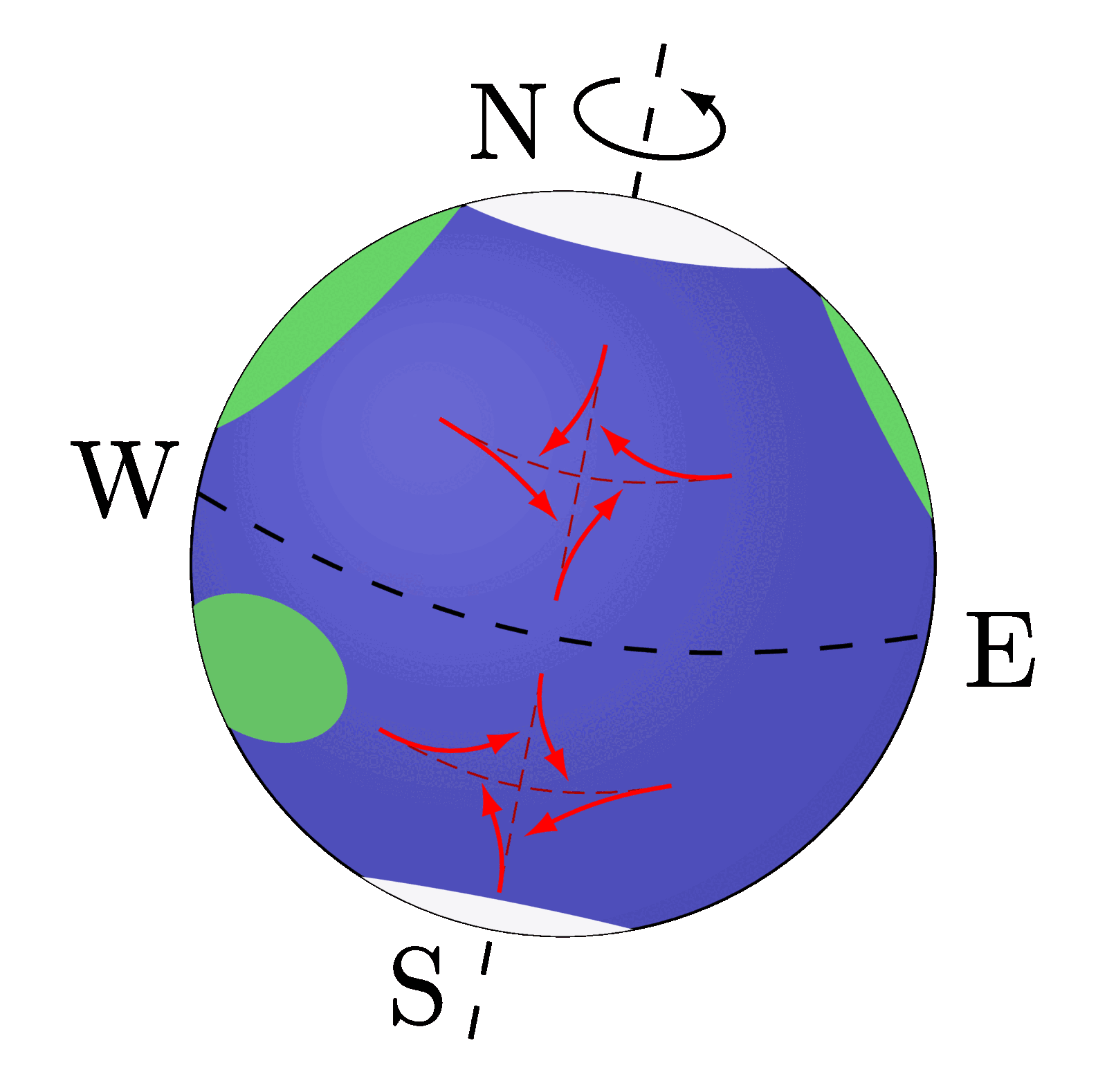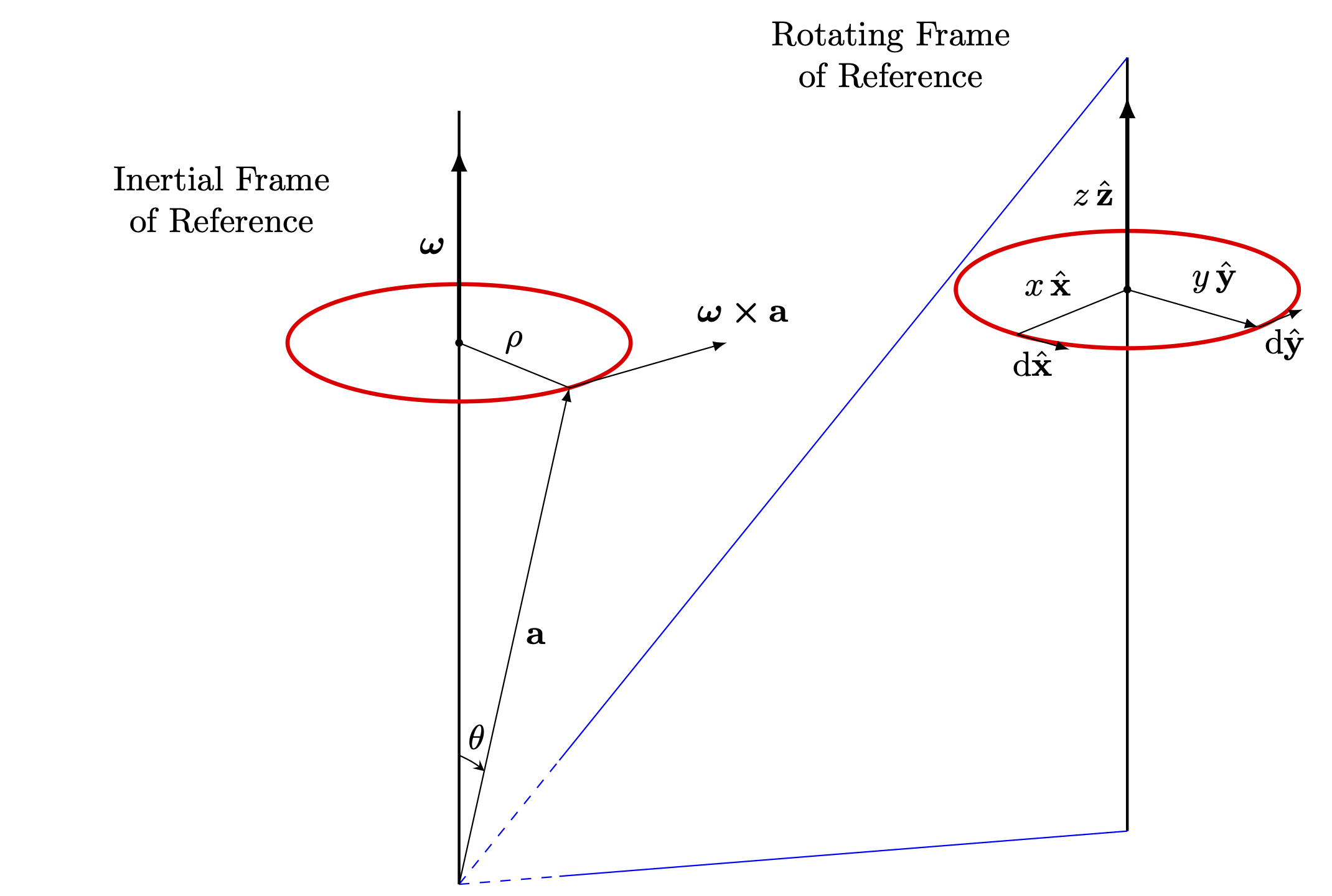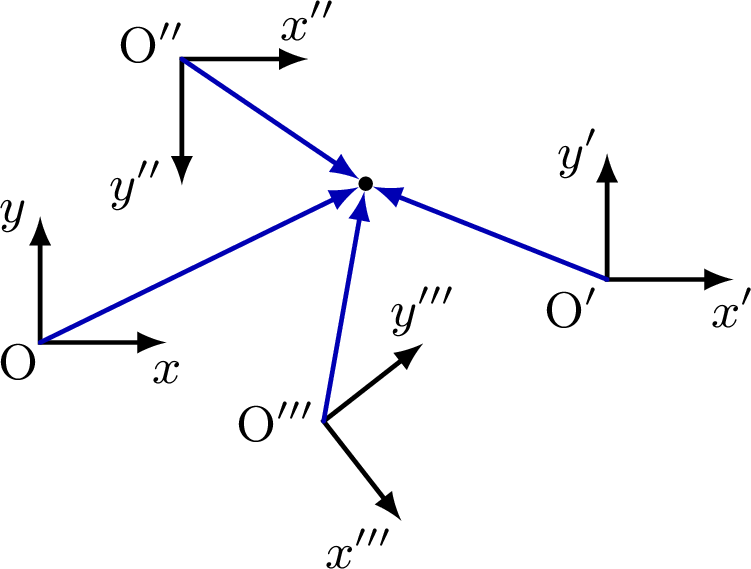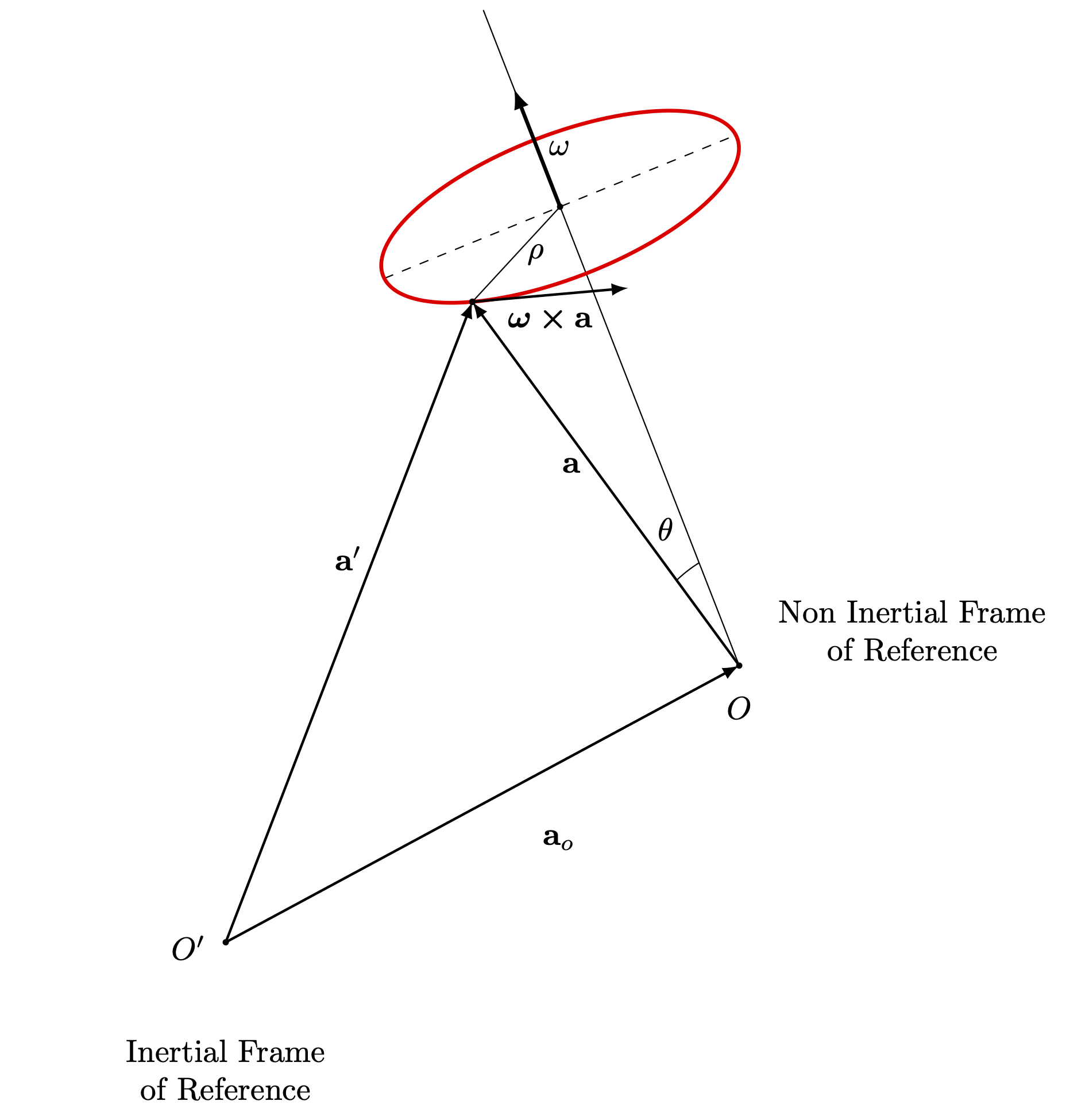Illustration of Galilean relativity between two inertial frame of references moving at a constant relative speed w.r.t. each other.
Edit and compile if you like:
% Author: Izaak Neutelings (September 2020)\documentclass[border=3pt,tikz]{standalone}\usepackage{amsmath}\usepackage{tikz}\usepackage{physics}\usetikzlibrary{calc}\usetikzlibrary{bending} % for arrow head angle\usetikzlibrary{patterns}\usetikzlibrary{decorations.pathmorphing} % for decorate random steps\tikzset{>=latex} % for LaTeX arrow head\usepackage{xcolor}\colorlet{xcol}{blue!70!black}\colorlet{vcol}{green!45!black}\tikzstyle{vvec}=[->,very thick,vcol,line cap=round]\tikzstyle{ground}=[preaction={fill,top color=black!10,bottom color=black!5,shading angle=20},fill,pattern=north east lines,draw=none,minimum width=0.3,minimum height=0.6]\tikzstyle{mass}=[line width=0.5,red!30!black,fill=red!40!black!10,rounded corners=1,top color=red!40!black!20,bottom color=red!40!black!10,shading angle=20]\def\car{\draw[thick,rounded corners=2,orange!60!black,top color=orange!70!black!6,bottom color=orange!70!black!2,shading angle=10](0,1.1*\CR) rectangle++ (\CW,\CH);\fill[black!20](0.15*\CW,\CR) circle(\CR) (0.85*\CW,\CR) circle(\CR);\draw[black,fill=black!90,thin,even odd rule](0.15*\CW,\CR) circle(\CR) circle(0.5*\CR)(0.85*\CW,\CR) circle(\CR) circle(0.5*\CR);}\begin{document}% STATIONARY REFERENCE FRAME\begin{tikzpicture}\def\r{0.06} % mass radius\def\H{1.8} % human height\def\CW{3.6} % car width\def\CH{2.5} % car height\def\CR{0.3} % wheel radius\def\d{0.5*\CW} % car distance
Click to download: reference_frame_inertial.tex • reference_frame_inertial.pdf
Open in Overleaf: reference_frame_inertial.tex




